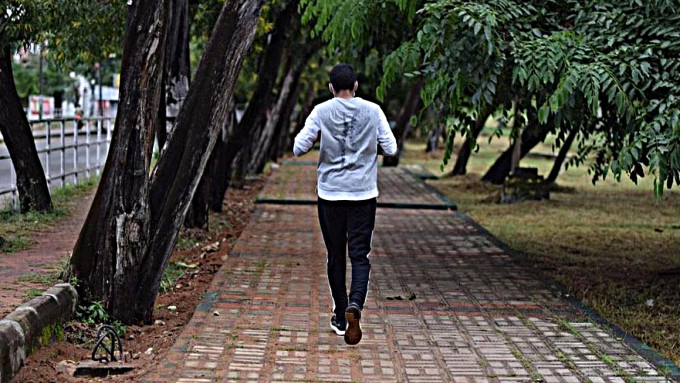This simple step test, which 40% Indians failed, can determine if your heart and lungs are healthy
Feeling out of breath climbing a few flights of stairs? Worried about your heart health? You’re not alone. A surprisingly simple test, the Queens College Step Test, can offer valuable insights. But a recent study highlighting a 40% failure rate among young Indians raises a red flag.
The study conducted by researchers from SBB College of Physiotherapy at VS Hospital in Ahmedabad, Gujarat, India, raised concerns about the cardiorespiratory fitness of young adults. The study, titled “Effect of physical parameters on Queens College step test performance in young adults of Ahmedabad, Gujarat, India” and published in the Journal of Society of Indian Physiotherapists, found that a troubling 40% of young participants were unable to complete the Queens College Step Test.

Explaining the Queens step test, Dr Abhishek Srivastava, neuro-rehabilitation specialist, and director, Centre for Physical Medicine and Rehabilitation, at Kokilaben Dhirubhai Ambani Hospital, Mumbai, said that it requires you to step up and down on a platform for a set amount of time at a specific pace.
“The Queens College Step Test is a sub-maximal test that provides a measure of your endurance fitness. It’s a safe and quick way to estimate your VO2 max, which is the maximum amount of oxygen your body can utilise during exercise,” he said in an interaction with indianexpress.com. Think of it as a mini-workout with a big payoff.
 The VO2max can be estimated using maximal or sub-maximal tests, by direct or indirect methods. (file)
The VO2max can be estimated using maximal or sub-maximal tests, by direct or indirect methods. (file)
How do you conduct the test?
- The participant steps up and down on 16.25 inches/41.3 cm step at a rate of 22 steps per minute for females and at 24 steps per minute for males, using a four-step cadence, ‘up-up-down-down’ for 3 minutes.
- The participant stops immediately on completion of the test, and the heart beats are counted for 15 seconds from 5-20 seconds of recovery.
- Multiply this 15 second reading by 4 will give the beats per minute (bpm) value to be used in the calculation to determine the VO2 max.
The VO2max can be estimated using maximal or sub-maximal tests, by direct or indirect methods. Direct measurement of VO2 max using Gas analyser and Step or Field tests are used for indirect measurement. Queens Step Test is being used very frequently to estimate VO2 max due to its easy, safe, quick and feasible approach.
Why is a good VO2 max important?
Having a high VO2 max is like having a powerful engine in your body. It signifies a strong and efficient cardiovascular and respiratory system. This translates to several benefits, explained Dr Srivastava, including:
 If you haven’t already, consider talking to your doctor about incorporating this test into your routine. (Representational Photo)
If you haven’t already, consider talking to your doctor about incorporating this test into your routine. (Representational Photo)
- Better stress tolerance: You’ll have more stamina to handle daily demands and unexpected challenges.
- Reduced risk of chronic diseases: A high VO2 max is linked to a lower risk of heart disease, diabetes, and even early death.
- Improved overall health: You’ll likely have more energy throughout the day and feel better physically.
Dr Srivastava also highlighted that the failure of 40% of Indian students to pass the test was a cause for concern. “This reflects a growing issue in our society where physical fitness is being neglected. Our focus on social media and a less active lifestyle is impacting the health of our youth.”
Taking action for a healthier duture
The low scores on this simple test serve as a wake-up call. Dr. Srivastava emphasised the need for:
- Mass awareness campaigns: Educating young people about the importance of physical fitness and the dangers of a sedentary lifestyle.
- School screenings: Implementing the Queens College Step Test in schools and colleges to assess fitness levels.
If you haven’t already, consider talking to your doctor about incorporating this test into your routine. Remember, prioritising physical activity is an investment in your long-term health and well-being.
Disclaimer: The copyright of this article belongs to the original author. Reposting this article is solely for the purpose of information dissemination and does not constitute any investment advice. If there is any infringement, please contact us immediately. We will make corrections or deletions as necessary. Thank you.





